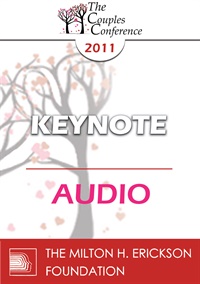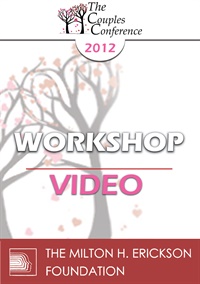CC23 Keynote 06 - A Psychobiological Approach to Couple Therapy - Stan Tatkin, PsyD, MFT
- Average Rating:
- Not yet rated
- Topic Areas:
- Keynotes | Attachment | Psychobiological Approach to Couples Therapy (PACT) | Stress
- Categories:
- Couples Conference | Couples Conference 2023 | Pioneers in Couples and Family Therapy
- Faculty:
- Stan Tatkin, PsyD, MFT
- Duration:
- 57:10
- Format:
- Audio Only
- Original Program Date:
- May 07, 2023
- License:
- Never Expires.
Description
Description: A keynote on PACT as a purpose-centered, psychobiological approach to primary attachment. Tatkin outlines secure functioning as a high-bar, team-based relational ethic grounded in fairness, mutuality, and collaboration. Drawing from attachment theory, neuroscience, and arousal regulation, he highlights how bottom-up, real-time assessment guides couples toward durable, principled connection.
Syllabus Description: A psychobiological approach to couple therapy (PACT) is, at is core, a social-justice, purpose-centered approach to primary attachment relationships (two or more). That is to say, PACT therapists expect their partnership clients to become secure functioning. A secure-functioning system is one that is a two (or more) psychological system grounded in fairness, justice, mutual sensitivity, collaboration, and cooperation. In other words, secure functioning relationship is a team sport. For many, secure functioning is a high bar to achieve. It requires a degree of social-emotional development, moral reasoning, individuation, differentiation, self-activation, and of course interest in, and a willingness to pursue it as a goal.
PACT, underneath the hood, is a polytheoretical approach that combines, among other things, attachment, arousal regulation, and developmental neuroscience. Aside from the top-down therapeutic stance of secure functioning, PACT is a bottom-up approach that focuses on implicit, somatic “tells” in each partner’s face, body, voice, movements, and linguistic choices, particularly when partners are under stress. This process orientation helps the clinician obtain more information quickly and strategically than content oriented or procedure-based approaches.
Learning Objectives:
- To be able to list at least five characteristics of a secure-functioning relationship.
- To be able to describe a two-person psychological system and how it operates.
- To be able to describe and define co-regulation, autoregulation, external regulation, and self-regulation.
Credits
Handouts
| Ericksonian Learning Snapshot (248.8 KB) | 2 Pages | Available after Purchase |
Faculty

Stan Tatkin, PsyD, MFT Related Seminars and Products
Stan Tatkin, PsyD, MFT, is a clinician, researcher, teacher, and developer of A Psychobiological Approach to Couple Therapy (PACT®). He has a clinical practice in Calabasas, CA, where he has specialized for the last 15 years in working with couples and individuals who wish to be in relationships. He and his wife, Tracey Boldemann-Tatkin, developed the PACT Institute for the purpose of training other psychotherapists to use this method in their clinical practice.





